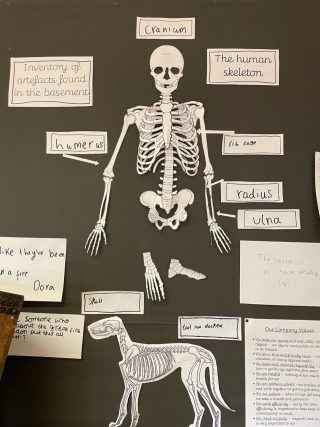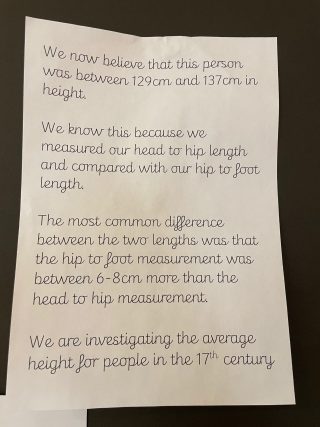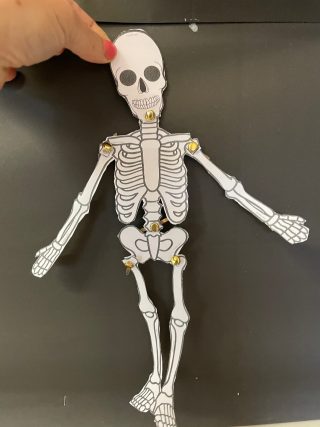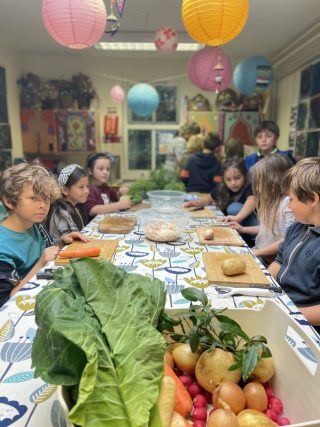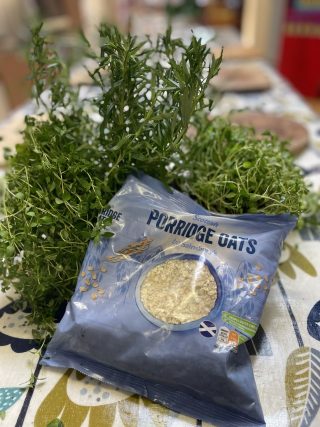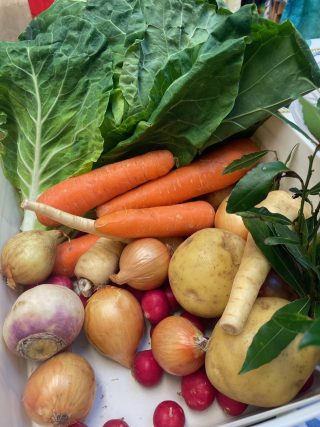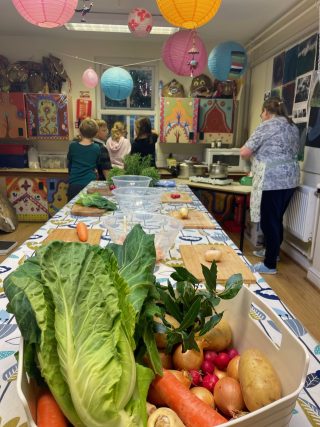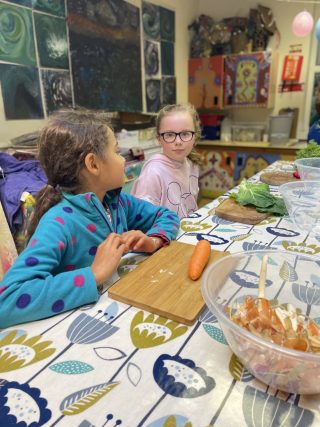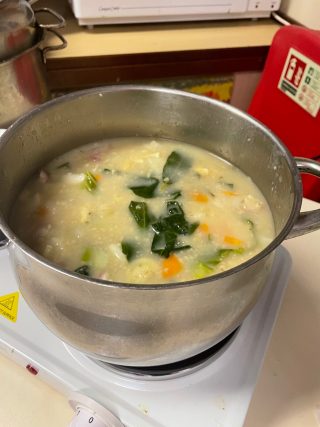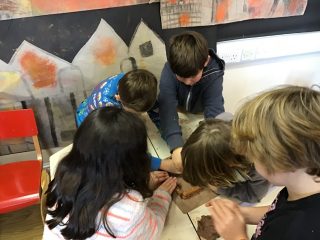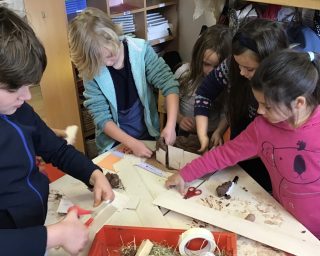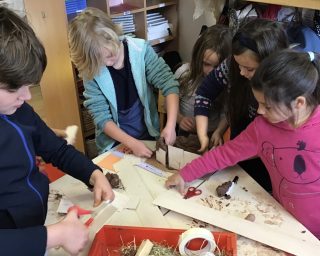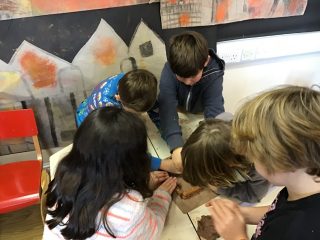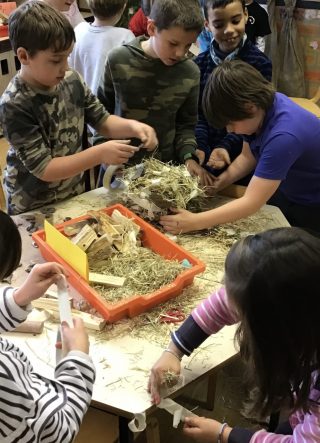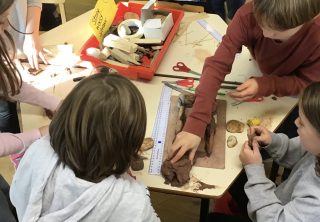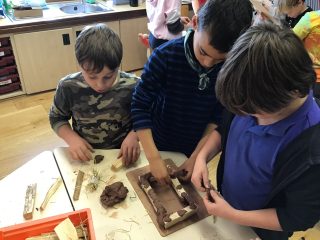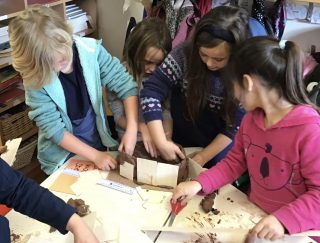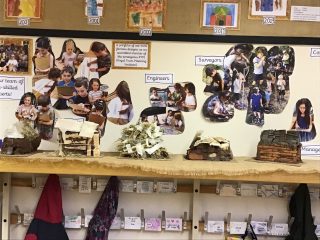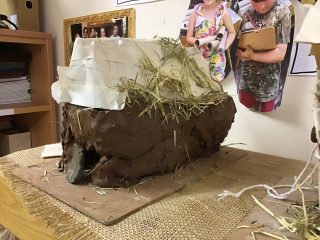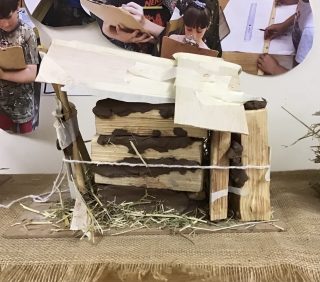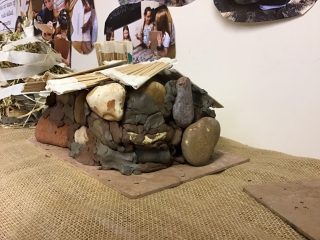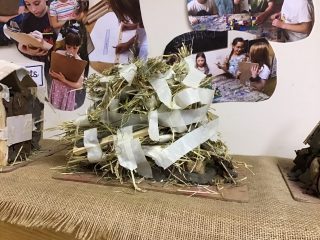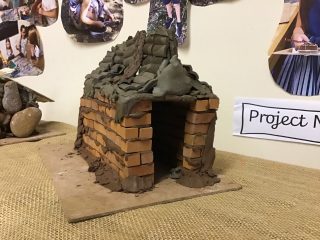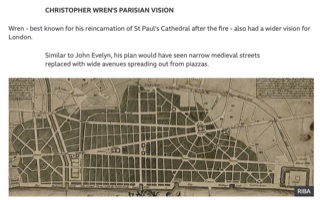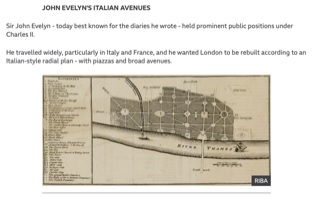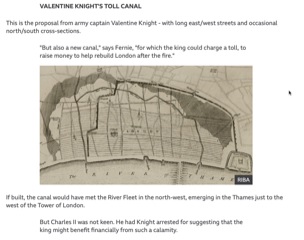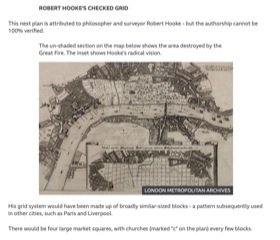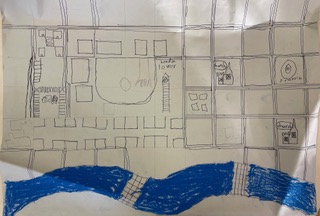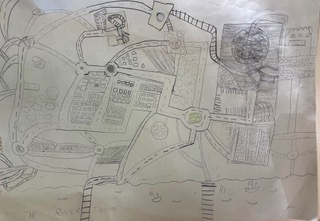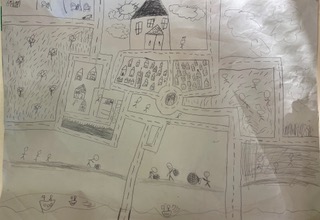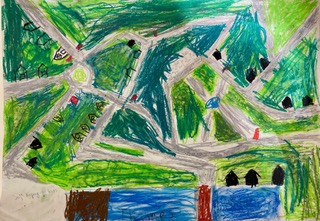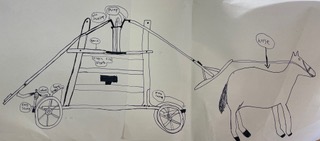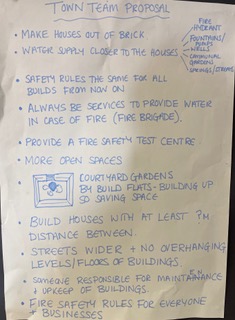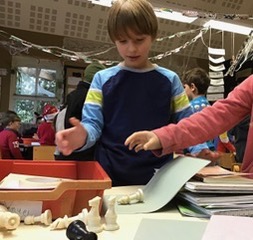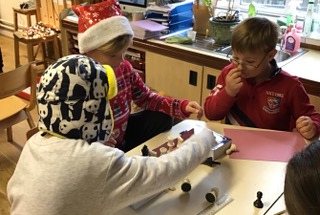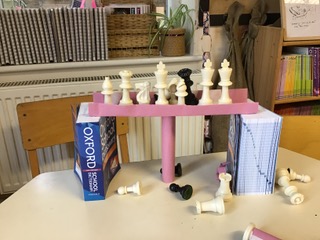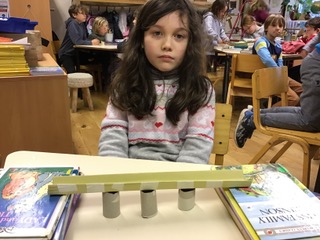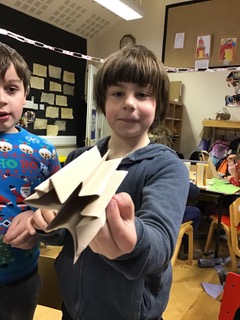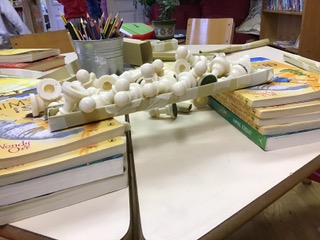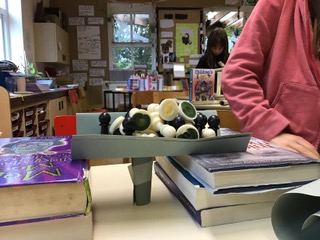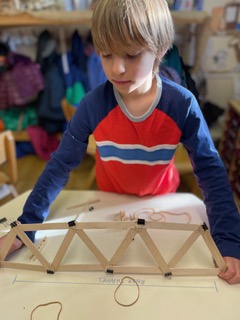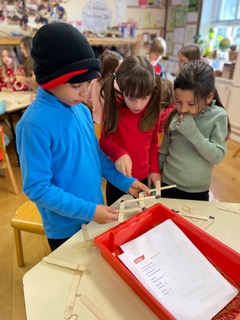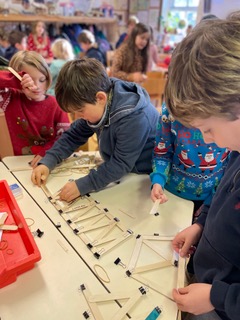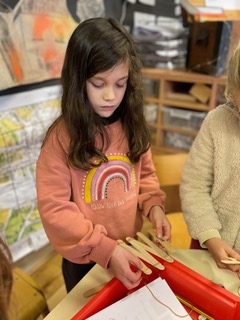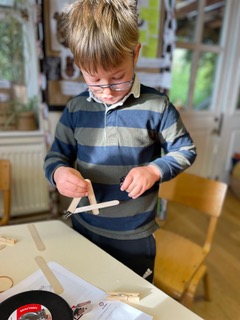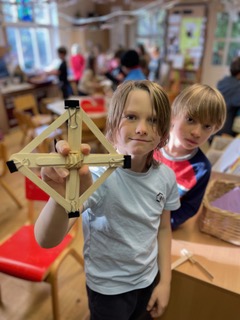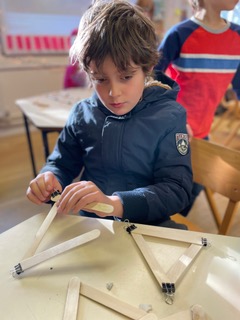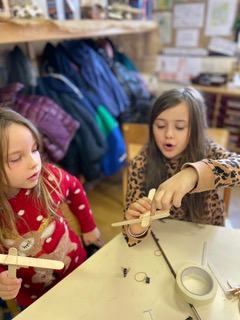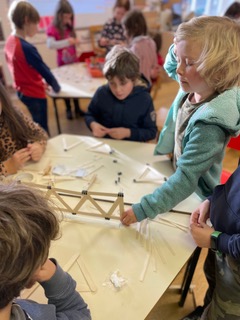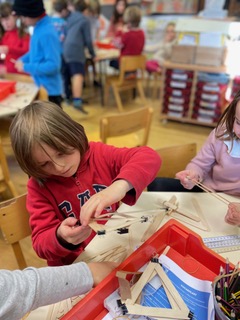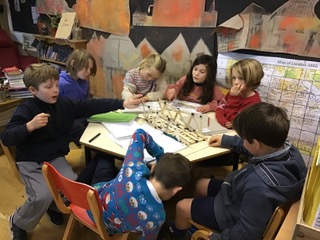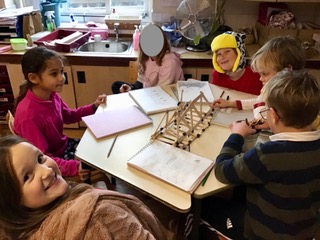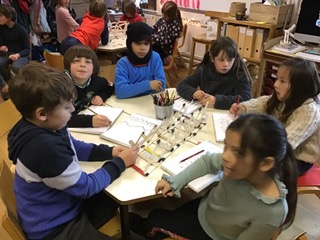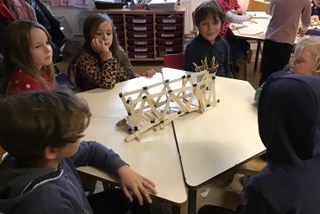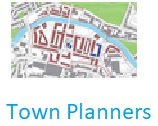
W/c 6th September 2021
Meet our team of multi-skilled experts!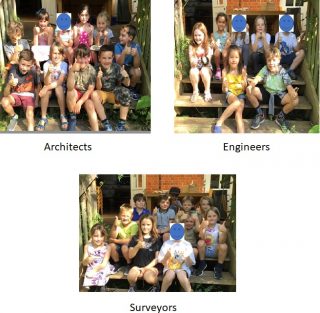
We started off the week with a tight deadline to finish the designs of some communal gardens in St Botolph Street, London. The remit was to consider the needs of all the people likely to move into the newly built houses around the gardens; whether they be families with young children, professional couples, retired and aged people or people with particular sensory needs. Here are some of the designs the team came up with:
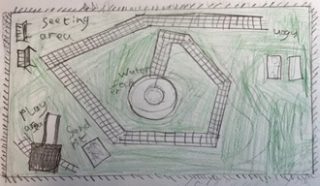

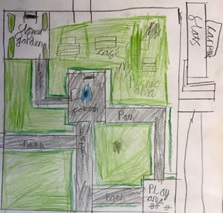
When we then had a meeting with the Site Manager, Tom Beechly later that day, he delivered some frustrating but interesting news! Some artefacts and what appears to be chalk basements were found whilst digging and preparing the ground and he’s been asked to down tools until it’s been investigated further by the Museum of London. This is what the site workers found:
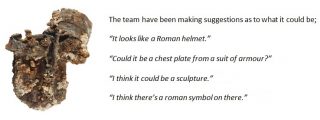
W/c 13th September 2021
We’ve had news from the Museum of London! They’ve sent us an x-ray of the lump of metal found at the site. Can you make out what it is? The team discuss the interesting picture and decide that it is a padlock with some keys.
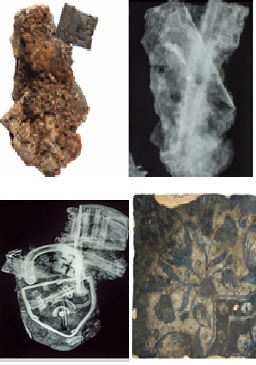 The museum confirmed our thoughts and that the pieces of metal had been welded together at some point in the past, having been subjected to high levels of heat reaching up to 1250 degrees centigrade! What on earth could’ve produced that kind of heat in the centre of London?! There have been more artefacts found with similar traces of severe heat exposure.
The museum confirmed our thoughts and that the pieces of metal had been welded together at some point in the past, having been subjected to high levels of heat reaching up to 1250 degrees centigrade! What on earth could’ve produced that kind of heat in the centre of London?! There have been more artefacts found with similar traces of severe heat exposure.
While we wait to find out more, we continue our work at the office!
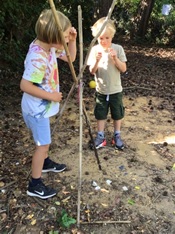
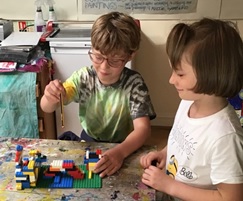
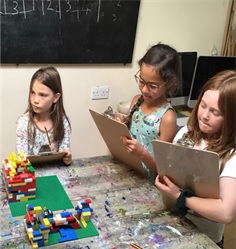
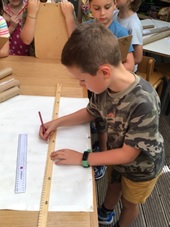
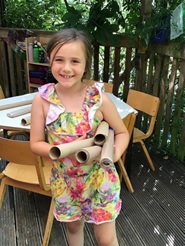
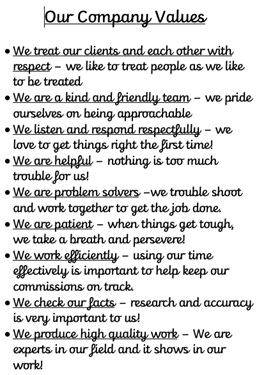
We’ve been invited to work on the famous Sagrada Familia in Barcelona as the project draws to a close in the final 5 years. What an accolade and an acknowledgement of all our hard work and achievements over the years. TownTeam have been for recognised as leading engineers, surveyors and architects and we can’t wait to get to work on such an important and historic project!
Here are some of our preliminary designs:
We’ve now decided on our company logo and our opening hours!
W/c 20th September 2021
We were invited down to the site at St Botolph Street this morning and Tom Beechly, our site manager, seemed very excited about a new discovery. When we arrived, we were asked to put on our hard hats and welly boots…
Tom showed us an old set of steps which led into a tunnel beneath the ground. We had to be very careful not to trip up when walking through the dark, damp tunnel. The tunnel walls seemed to be whispering to us. It was creepy. These are our reactions when we found a mysterious door:
“There’s veins in the wood. I can feel the bark.”
“It’s cold and wet.”
“I can hear things coming from the other side. It gives me the goosebumps.”
“I’m scared but curious.”
“It feels rough and damaged.”
W/c 27th September 2021
The team has been thinking about reasons why the walk through the tunnel and the discovery of the mysterious door made us get the goosebumps and feel uncomfortable. We imagine what the walls of the tunnel might be saying to us and in role, we whisper phrases such as,
“Go back!”
” You’re not wanted here!”
“This will all lead to no good!”
“You are not welcome!”
“You shall not pass!”
“There’s someone in there!”
“Go away!”
“There is only danger here!”
In small teams we then walked through the tunnel to the door. It was locked fast and we have tried everything to open it including using a crow bar, digging around the walls at the edge of the door, using ropes and screwdrivers and even setting fire to it!
After much deliberation, we decide that as the walls of the tunnel have spoken to us, maybe they may be able to give us some clues about how to open the door…
In role as the walls of the tunnel, one child told us that he’d seen people try to unlock the door before and that most had been unsuccessful. However, he had seen one person go through and never come back. He told us that we needed some words and some numbers in a specific code to open the door. Time to get our thinking caps on! Could it be one of these kennings? Why might the number 1666 be significant? The team get to work!
W/c 4th October 2021
In groups, the team continue to figure out the code to the door in the basement using kennings and dates we feel could be significant. A child takes on the role of the door and knows the code to unlock it! Is it Wind-Breaker, 1665? No! Is it Secret- Keeper, 1666? No!
The team works tirelessly to break the code. Is it Portal-Opener, 1665? No! Is it Mystery-Hider, 1666? YES! Finally we have cracked the code! As the door swings open, the team is beyond excited and curious to see what’s behind it….. An old, wooden chest!
“Is it safe to open?”
“What if it’s booby trapped?”
“Let’s have a vote about who’s going to open it.”
Each member of the team has a chance to give reasons why they should be the one to open
the chest.
“ I was a bomb disposal expert in my previous job.”
“I am trustworthy and brave.”
“I have the correct protective equipment.”
“I know how to take care of ancient artefacts and can make sure the chest and its contents
are protected properly.”
One person is chosen for the role and everyone takes cover….
A cannonball and some papers with statements written upon them are found inside the chest.
The Fire? Foreigners? Catholics? Maids? The King himself? What do these papers mean?
Who has collected them?
Wc 11th October 2021
The team get ready to explore the basement further. We remember our roles within the Town Team as surveyors, architects and engineers. The surveyors will go first with their specialism in safety and seeing how the ground lies before a project. The engineers go next to secure the ceilings and walls. Then the architects follow to examine the objects and
record evidence found….
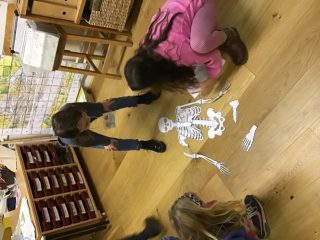
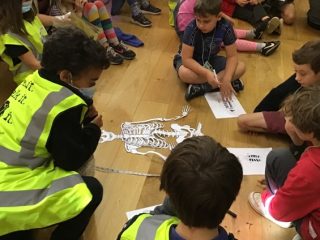
A skeleton
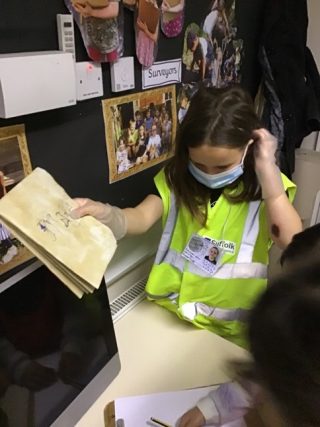
A map
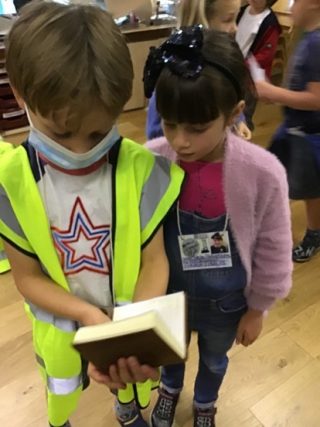
A diary and quill
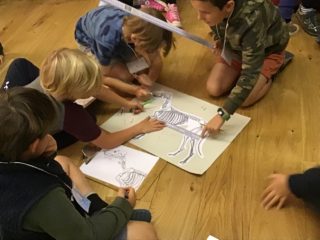
A skeleton of a dog
The team makes the difficult decision to keep the discovery to ourselves for a while before letting the Museum of London know. One of the team suggests writing a letter to a friend who works in antiquities to see if we can get the skeletons carbon-dated. Meanwhile, the team discuss conclusions we have come to regarding the findings. The dog has a tail which is not docked. This means that it could’ve been a pet rather than a working dog. The skeleton bones look healthy with no signs of damage or injury and so we are questioning how this person dies. We take measurements to determine the age, height and gender. Our investigations point to the victim being a young male. Questions about nutrition and the average height of people in 1666 are posed. This leads to a class investigation into our own heights and foods we like to eat in the 21st Century.
The team wish to know more about the skeleton and decide to interview it. With the teacher in role as George Webb, a young kitchen boy who also looks after the master’s dogs, the team learn about how George came to be in the basement with Wren, the master’s favourite whippet.
W/c 18th October 2021
The team were very interested in the diet and nutrition which George Webb, the skeleton found in the basement, might’ve consumed in the 17th century so we invited Wendy-Ann Street, who runs the gardening and foraging activities at Bealings, to help us recreate pottage.
Pottage was anything cooked in a pot; remaining a staple of the poor’s diet throughout most of the 9th to 17th century. Some people were lucky enough to include meat such as chicken or fish in their pottage if they happened to be in the service of a noble family.
We used the following recipe:
Oats Onions Potatoes Water
Carrots Radishes Turnips Rosemary
Cabbage Thyme Bay Leaves
Everyone in the team had a go at chopping and peeling vegetables and stirring the pot before we were able to finally taste the delicious pottage! On the whole, everyone said they would recreate it at home and eat it quite happily. It was very tasty, quite hearty and filling, and many asked for 2nds and 3rds!
Wc 1st November 2021
The team has learned that the boy was told to stay in the house and look after the dogs by his master, Sir Thomas Beechley as a huge fire overtook the city. Sir Thomas Beechly is an affluent man who goes to parliament every day. He has had influential friends to his house for secret meetings, which George couldn’t help overhearing. He heard words such as, conspiracy, inquiry and keep the chest safe. He doesn’t know what this means. Sadly, it seems that he succumbed to smoke inhalation after trying to find a safe place to hide with the dogs. He got trapped in the burning house and decided the basement might be the safest place away from the fire. Two of the dogs got scared by the sounds and the heat and ran off. Only Wren stayed with him…..
The team investigate Fire Safety and decide to draw posters to tell George what to do in case of a fire. George cannot read and so the team has to use pictures and diagrams to show the STOP, DROP and ROLL technique and STAY LOW and GO! We practice what to do if we are asleep in our bedrooms and the alarms go off. Obviously, in 1666, fire alarms weren’t invented which gives us extra time and knowledge of what to do to keep safe. Poor George could’ve benefitted from this information.
We learn about how a fire can start, spread and materials that burn easily. We also study how the heat of a fire can jump from 450 degrees Celsius to over 1000 degrees Celsius with the addition of a strong wind! These pictures were shared by a child whose neighbour barely made it out alive after an accident involving petrol. Seven fire engines were called to the scene! In 1666, there was no official fire brigade.
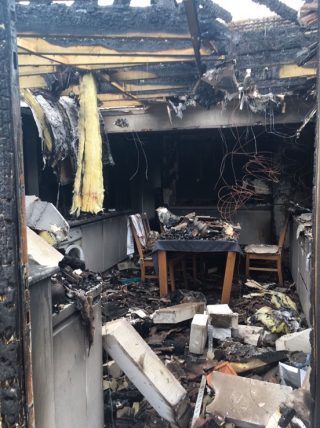
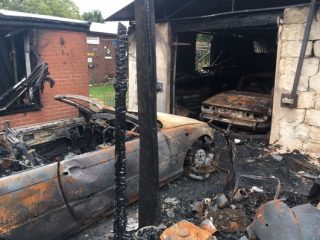
W/c 8th – 19th November 2021
Imagine how George felt in the fire! We have been using our five senses (sight, smell, touch, taste and sound) to describe it. From the adjectives we thought of, we then created some poems about fire using these words. We wrote ‘Haiku’ poems about fire. A Haiku is a poem created with a set pattern of syllables – five syllables on the first line, seven syllables on the second and five syllables on the third line. This was quite a challenge to fit the right words into the Haiku pattern – it was lots of fun and we created some brilliant poems!
As a result of the fire of 1666, we have been considering what houses are made of and what the most fire-resistant building materials might be. So that we can prove to others that there could better materials used to rebuild London following the fire, we have been creating an experiment to test out our theories. We discussed together how we thought we could do this and how we could make it a ‘fair test’.
We decided together that each town planners’ team would build a small scaled-down model of a house made primarily with one type of building material – wood, straw, bricks/tiles, clay and stone. To make it a fair test, each house would need to be exactly the same size. Whilst building the houses, we had to carefully measure the base and keep measuring it as the building grew taller , until it was the correct height. It was also decided, for it to be a fair test, that all houses would need to be set alight at the same time to ensure that the weather conditions were the same too.
When we carry out the fire testing of the houses, we needed to think carefully about how everyone would be kept safe, so have we included in our written experiment some safety precautions which we must follow. We will be carrying out the fire test in a big open space (the field); everyone will need to keep a safe distance away (behind a barrier); buckets of sand and water will be on the ready, along with a fire extinguisher; and four adults will also be present to ensure everyone is being safe.
The houses are nearly dry now and almost ready to test. Whilst we wait for the houses to be fully dry, we have been making predictions about what would happen to each house and what percentage or fraction of the houses would be left after they had been burning for 15 minutes. Everyone is very excited for the testing day to arrive!
W/c 29th November 2021
King Charles II has been considering plans to rebuild London after the Great Fire. The team overhears a discussion with his advisor where the king is concerned about raising taxes and finding money for a modernised City of London. He would never let it be known publicly that the plans submitted by Christopher Wren, John Evelyn, Richard Newcourt, Robert Hooke and Valentine Knight are incredibly expensive and he’s having trouble finding funds to finance such projects.
The King also likes some aspects of each design but as yet, none of them really incorporates all the aspects he wants for his vision of a new London. Can The Town Team help?
This leads to a conversation about current taxation in 2021 and how the Government raises funds for public services such as the NHS, Education and infrastructure. The team works on finding 10% of any number and understanding place value with some extending to finding other percentages of numbers such as 40%, 70% & 90%.
The team return to the problems King Charles now faces regarding the designs, land ownership issues and preventing a fire such as this from occurring again. We decide to develop a proposal to offer the King and seek an audience with him. After careful thought and discussion about the other plans submitted already, the team come up with our own designs and thoughts about how to rebuild London.
We wait to hear if we have secured an audience with the King…….
W/c 6th December 2021
After our audience with King Charles, he sent the team an incredibly important commission. We have been asked to design and build London Bridge!!!
This is a huge deal for us as this will boost our credibility as Town Planners for centuries to come. Here is the letter he sent:
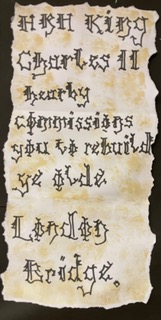
We begin research on what makes bridges strong using paper to make models. We then test them with weights; adapting our designs as we find out more information and make our observations. We don’t want that song, “London Bridge is falling down” to be about our structures!
Once we have some ideas about cylinders, triangles and layers making our structures stronger, we move onto using bulldog clips, white tack, lollipop sticks and rubber bands to put our ideas into practice.
All teams had the same resources to work with and were given the same distance of 45cm across the river which our bridges had to span. (Measurements converted from metric to imperial to come soon!). We stopped at various intervals to discuss how the teams were getting on and how to make sure everyone was heard and our ideas valued.
The King has expressed his wish to see our designs and will want them to be tested with weights to determine the strongest bridge before we build the real thing.


 The museum confirmed our thoughts and that the pieces of metal had been welded together at some point in the past, having been subjected to high levels of heat reaching up to 1250 degrees centigrade! What on earth could’ve produced that kind of heat in the centre of London?! There have been more artefacts found with similar traces of severe heat exposure.
The museum confirmed our thoughts and that the pieces of metal had been welded together at some point in the past, having been subjected to high levels of heat reaching up to 1250 degrees centigrade! What on earth could’ve produced that kind of heat in the centre of London?! There have been more artefacts found with similar traces of severe heat exposure.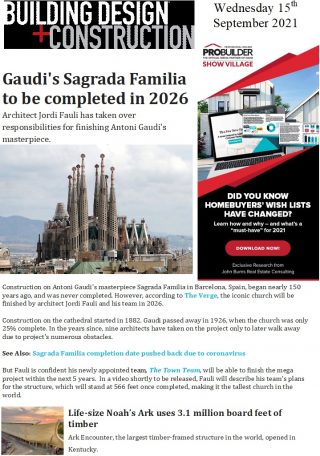
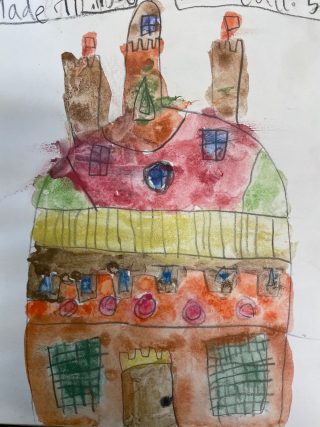
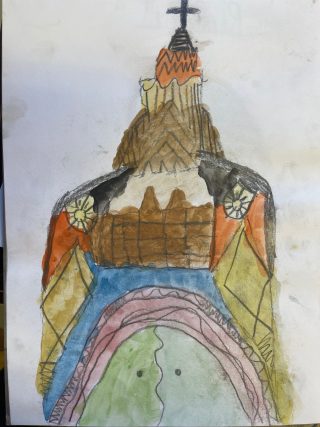
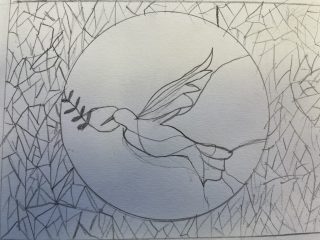
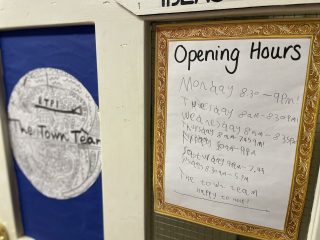
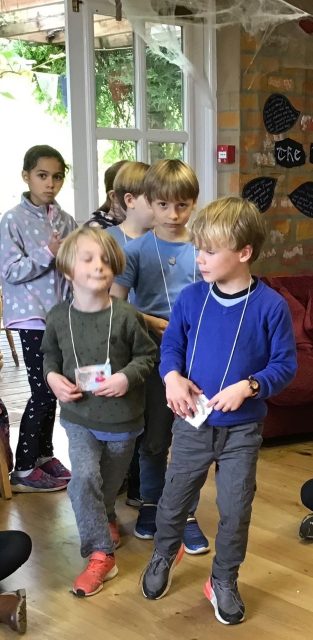
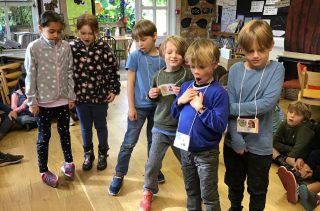
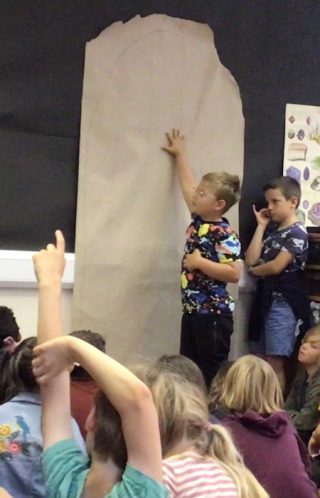
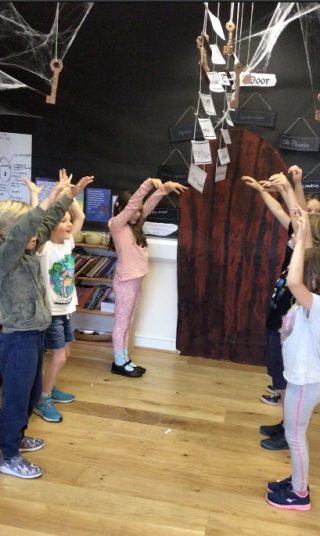
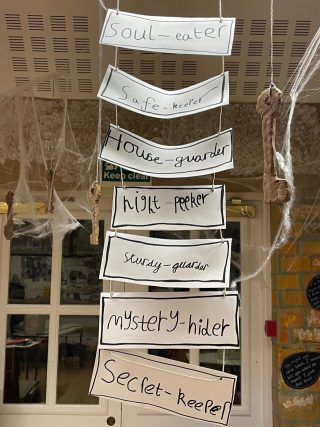
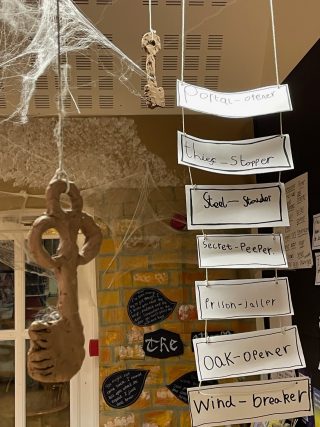
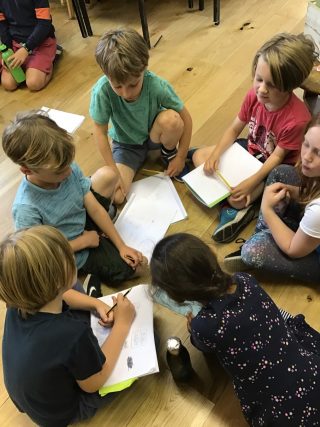
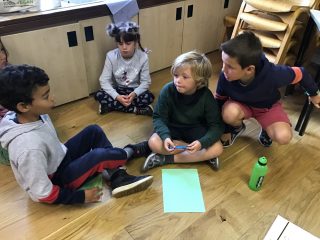
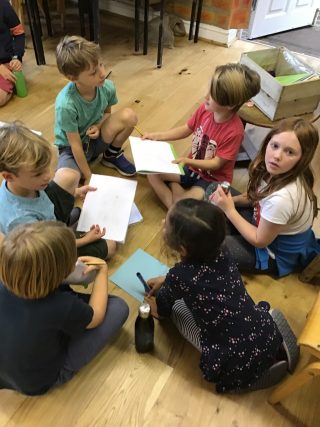
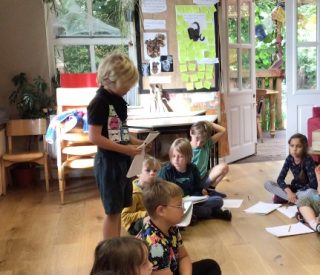
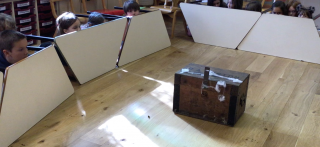
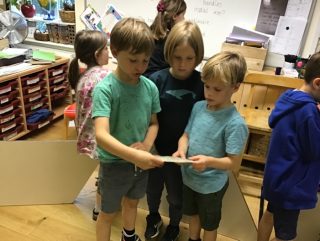
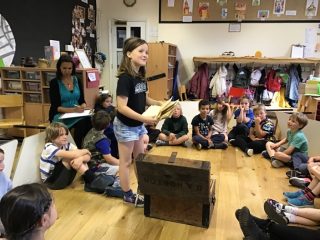
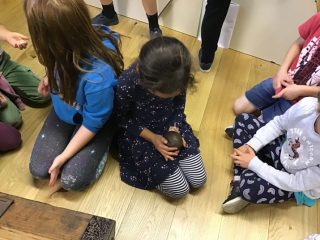
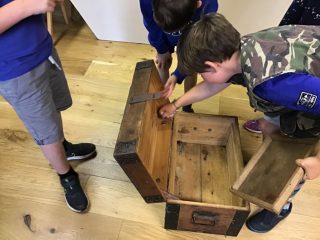
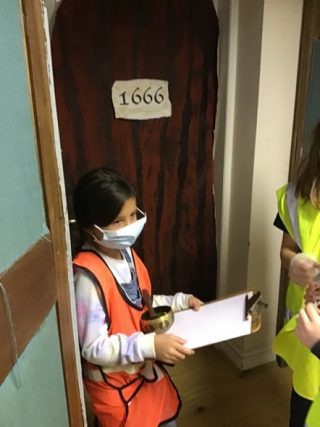

 A skeleton
A skeleton A map
A map A diary and quill
A diary and quill A skeleton of a dog
A skeleton of a dog